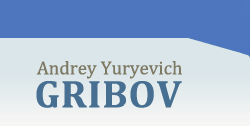
| HOME |

|
ABOUT THE AUTHOR |

|
|

|
WHERE TO BUY |


Full-bodied metal coins Part I. Part III.
Part IV.
The first known coins were made in the kingdom of Lydia (on the territory of present-day Turkey) in the 7th century B.C. out of electrum, a natural alloy of gold and silver. A particular design was stamped on them to confirm the prescribed weight. The minted design played the part of a stamp by which the ruler guaranteed the accuracy of the composition and weight of the coin109 On the territory of Rus’, the minting of silver and gold coins dates
back to the times of Prince Vladimir I (Kievan Rus, end of the 10th —
beginning of the 11th century). On some gold coins, the inscription
«Vladimir on the throne» was continued on the reverse with «and behold
his gold», and this signified the guarantee of the coin’s composition. In
the «Russkaya Pravda» code of laws, metal money was still called kuna,
although silver grivnas have also appeared by then. Between the 12th
and the 15th centuries, princes tried to mint their own «specific» coins.
In Novgorod, foreign money was in circulation — «yefimki» (from
Joachimsthaler — German silver coins which were being used as an
international means of payment in the whole of Eastern Europe). In
the Moscow principality, the initiative to mint silver coins was taken by
Dmitri Donskoi (14th century), who began to smelt Tatar silver money
into Russian grivnas. Ivan III (end of the 15th century) established that
the right to mint coins could belong only to the «elder» of the princes,
the occupier of the Moscow throne. The first regulation of the Russian
monetary system was passed under Ivan the Terrible. At the beginning
of his reign, «moskovkas» and «novgorodkas» were circulating freely,
and the former, at face vale, was equal to half a «novgorodka». At the
beginning of the 17th century, a single monetary unit was established in
Russia — the kopeck (a horseman with a spear [kop’ye in Russian]was
depicted on the coin), which weighed 0.68g of silver. This roughly corresponded with the weight of a «novgorodka»; «moskovkas» were still
being minted, as were half-kopecks and the «polushka» — a quarter of
a kopeck. In addition, the rouble, the poltina and the altyn were introduced
to the counting system, although the minting of the silver rouble
did not become the rule until Peter the Great’s reign. Gold money —
the chervonets — appeared in Russia from 1718 onwards. The growing role of the State as a body of enforcement in money circulation was demonstrated by the fact that «the population was notified before new money and polushkas were issued. In populous places, documents were hung up with the text of the tsar’s decree on the new money. This decree was read out after worship in churches, and «hailed» by town criers at the markets for several days» 110 "Nowadays we do not use gold coins, but they were circulated at
markets over several centuries. The particular popularity of gold as
money is due to the fact that it is relatively simple to carry, it is easy to
measure, and it is possible to check it for the presence of impurities.
When gold coins are used as money in the economy (or paper money,
which can be exchanged for gold on demand), we say that the gold
standard is operating in the economy."111
The circulation of this form of money, its proprietary and promissory content, its user value and exchange value, its legal nature and security, were the same as that of precise-weight metal ingots. |
Copying information from this website is only allowed under condition of referring to this web link.
Copyright © 2008 Andrey Gribov
All rights reserved